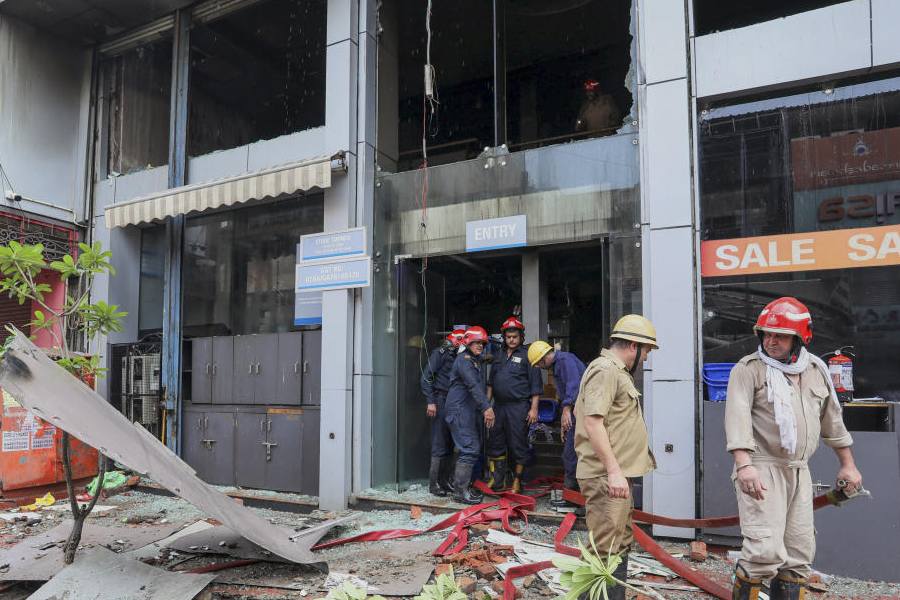 |
| Metropolitan Building. Picture by Sanjoy Chattopadhyaya |
It was where British army officers stationed in Singapore on short furlough would shop for a “decent lifestyle”. You could power-dress in tropical linen suits, sip lemon tea and dig into cucumber sandwiches for breakfast at the lifestyle retail rendezvous.
Circa 2007: This Christmas, you can pick up 40 varieties of papads and pickles, besides an array of handmade products from all over India, and shop for your household needs, from the same place, reborn.
Metropolitan Building, the colonial edifice which once housed Whiteway, Laidlaw & Co, then Asia’s largest departmental store, will now be home to Pantaloon Retail (India) Ltd’s “uniquely Indian” hypermarket chain stop, Big Bazaar.
The 37,000-sq-ft, two-level shop-stop will represent the rebirth of organised retail in the listed heritage building owned by the LIC, the façade of which is being restored under the supervision of architect Dulal Mukherjee.
Pantaloon Retail has engaged a team from National Institute of Design, Ahmedabad, to do the interior of the store, with the design brief of “being sensitive” to Calcutta’s urban history and cultural ethos, and create a solution that blends the past with contemporary needs.
While the overall product-mix will be in sync with the profile of the value-shopping chain, the Metropolitan Big Bazaar will incorporate some special categories and kiosks, like Hands of India (showcasing handmade stuff), Sanjha (celebrating India’s ethnic chic) and a Journey of India through its regional delicacies.
The space in the heritage address was obtained by Eden developers from LIC on a 25-year lease-rental agreement, with a provision for extension, says Manish Agarwal, the executive director of Pioneer Property Management Ltd, which brokered the deal.
“Pantaloon Retail has entered into a deal with Eden Developers to run a retail store on the premises with the consent of LIC,” says Agarwal.
It is learnt that Reliance and Vishal were also in the race for the Chowringhee property.
“Since this is an adaptive reuse, the contrast in the design shouldn’t be in disrespect to the building’s history. Also, signage has to be as sensitive as the ambience inside... One has to be careful not to destroy the heritage fabric,” warns architect and urban designer Partha Ranjan Das.











